Clearing the docket: Summer 2025, part three – Kino Lorber
My summary of spring and early summer viewing was interrupted by several more recent movies and disks that demanded attention, but I’ll get back to it this week … and try to be a bit more brief in my comments.
Kino Lorber
As always, Kino Lorber’s output is all over the place, which is one of the company’s most appealing qualities. My selection from what’s available, as always, leans towards their genre releases.
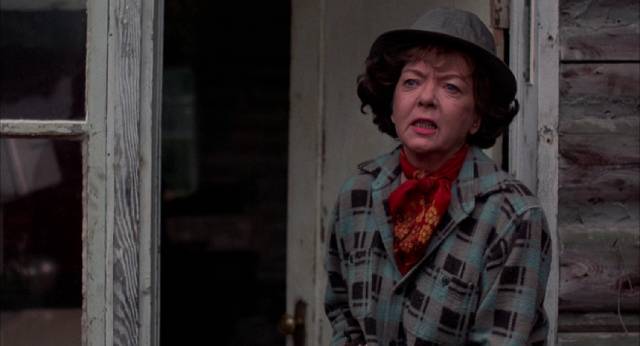
The Food of the Gods (Bert I. Gordon, 1976)
I have a soft spot for Bert I. Gordon, a member of that select group of filmmakers whose ambition often exceeded their resources, creative and financial, resulting in his case in a string of silly, cheesy horror movies, initially rooted in the ’50s penchant for giant monsters which he personally matted into rather perfunctory scenes with actors just going through the familiar B-movie motions. Somehow, in the ’70s, he managed to get some surprisingly big names, albeit mostly as their careers were fading, to add some prestige to projects which otherwise were very little advanced from ’50s efforts like The Cyclops, Beginning of the End, The Amazing Colossal Man (all 1957) and Attack of the Puppet People (1958). The presence of actors like Orson Welles, Ralph Meeker, Ida Lupino, Joan Collins and Robert Lansing among others certainly did more for Gordon than for their own reputations, but the ’70s were the heyday of ensemble casts trying to compete on the big screen against inevitable guest spots on TV shows.
The Food of the Gods (1976) was the second of three movies Gordon very loosely adapted from stories by H.G. Wells – the previous Village of the Giants (1965) had its roots in the same novel, while Food was followed by Empire of the Ants (1977). I actually saw both Food and Empire in the theatre on their original release (my zero-star ratings indicate a contempt I obviously grew out of!). I just revisited The Food of the Gods on Blu-ray because discovering The Mad Bomber (1973) late last year made me revise my opinion of Gordon a little – alas, Food confirms my original impressions. The Mad Bomber is definitely something of an anomaly, far better than any of his other movies, though the ghost story Tormented (1960) for all its faults also shows Gordon trying for something more effective than rampaging giants.
On an island in the Northwest, a gummy white substance oozes out of the ground and anything that eats it grows to enormous size. A not-very-bright farmer gives it to his chickens and thinks, hey, this could end world hunger. An unscrupulous businessman figures he can bottle it and make a lot of money. Trouble is, it’s not controllable – the first indication of trouble is a man being stung to death in the woods by a giant wasp, and before you know it everyone’s gathered at the farm, besieged by a horde of giant rats. A lot of the fun is undercut by obvious real violence to the animals attacking miniature sets, and the climax is totally implausible – blowing up a small wooden barrier down by the shore unleashes a raging flood which makes its way uphill to the farm where it washes away the mutant rodents. Still, you do get Marjoe Gortner, Pamela Franklin, Jon Cypher, John McLiam, Belinda Balaski, Meeker and Lupino doing their best to take it all seriously.
The disk has a decent transfer, an archival commentary from Gordon and an interview with Balaski, plus a new commentary from Gortner expert John Harrison.
*
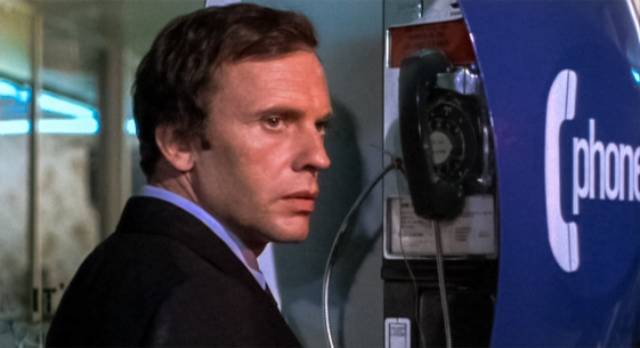
The Outside Man (Jacques Deray, 1972)
French crime specialist Jacques Deray (whose best film is La Piscine [1969]) travelled to Los Angeles for The Outside Man (Un homme est mort, 1972), a taut thriller co-written by Jean-Claude Carriere with an excellent cast led by Jean-Louis Trintignant as Lucien Bellon, a contract killer sent to knock off a crime boss (Ted de Corsia). The job goes smoothly – too smoothly, in fact; he’s been used and set up, and before he can head back to France he finds himself not only pursued by the cops, but also the target of another hitman who’s been hired by those who hired him in order to cover up in-fighting in the mob. The cast includes Ann-Margret, Angie Dickinson, John Hillerman, Georgia Engel and an eleven-year-old Jackie Earle Haley in his first big-screen role. There’s also Roy Scheider as Lenny, the hitman on Bellon’s trail; though always a welcome presence, here he’s given a rather thankless role as a supposed professional who’s so incompetent that his target easily escapes from every ambush.
This is a two-disk set which includes both the English-language international version and the French-dubbed domestic cut, both in 4K transfers from the original negative (there’s some criticism on-line about colour inaccuracy, but the image looks fine to my untrained eye). Other than trailers, the only extra is a commentary on the international version by Kino regulars Howard S. Berger, Nathaniel Thompson and Steve Mitchell.
*
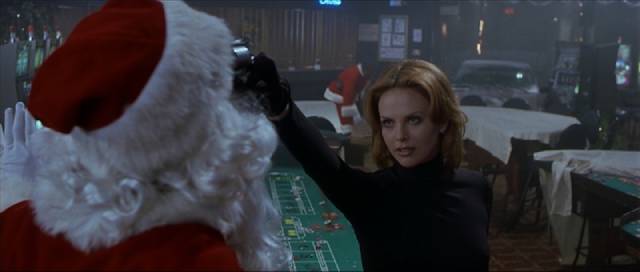
Reindeer Games (John Frankenheimer, 2000)
John Frankenheimer was nearing the end of his long career when he made Reindeer Games (2000), a bleak heist movie set in the depths of a Michigan winter. His glory days had long-since faded (he had only one more major project, the television movie Path to War [2002], about Lyndon Johnson and Vietnam) and critics and audiences didn’t think very highly of this late genre effort, though his previous thriller, Ronin (1998), had been well-received. Naturally, I prefer the heist movie to the spy thriller.
When small-time con Rudy’s buddy is killed in a prison riot just before he’s released, Rudy (Ben Affleck), against his better judgment, pretends to be the other guy when he meets the pen-pal he’s been hearing about outside the prison gate. Ashley (Charlize Theron) had never met the man she was writing to, so it seems all too easy for Rudy to slip into another identity to start a new life. Too bad for him that Ashley’s brother is a violent criminal who has been counting on the dead cell-mate to help him rob a rural casino at Christmas. Rudy can’t back out or let slip that he isn’t the man they think he is and has to figure out a way to stay alive and maybe derail the robbery plan. He’s so focused on trying to survive that it takes him a really long time to realize that everyone else is also concealing their true identity and that he’s being played by people who, at least in some ways, are smarter than he is. As genre dictates, the heist goes wrong in a very messy way and the final act piles up the double-crosses and surprise revelations.
The cast is good – in addition to Affleck and Theron, there’s Gary Sinise, James Frain, Clarence Williams III, Donal Logue, Danny Trejo and Dennis Farina – and Alan Caso’s cinematography has an effectively gritty neo-noir quality (strangely, his two previous credits in 1999 were on Muppets from Space and The Adventures of Elmo in Grouchland). Kino’s release has the theatrical cut on 4K, but thankfully includes the director’s cut on an additional Blu-ray; the latter, running twenty-one minutes longer, is the better option, a harsher, grittier movie which Frankenheimer was forced to soften for theatrical release. There’s an archival director commentary on each version, plus a very brief behind-the-scenes featurette.
*
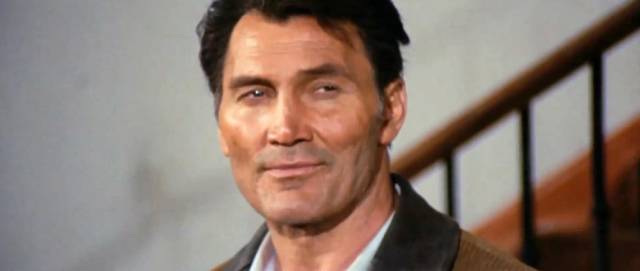
Battle of the Commandos (Umberto Lenzi, 1969)
I’m broadly familiar with the range of Umberto Lenzi’s work after the comic book adaptation Kriminal (1966), though I haven’t seen any of his earlier historical adventure movies. What I have seen includes gialli, poliziotteschi, cannibal movies, horror, zombies, prehistoric fantasies and U.S.-set thrillers. But I’d never seen a Lenzi war movie until I picked up a copy of Battle of the Commandos (1969), yet another Italian riff on The Dirty Dozen (1967), in which a ragtag bunch of military misfits are wrangled by an officer into a reluctant unit who prove themselves on a suicide mission.
Here, the officer is a Scottish maverick furious that his previous unit were all wiped out on a mission doomed to fail, sent by a high command which doesn’t value the lives of soldiers. Ordered behind German lines again to take out some defences in preparation for the D-Day landings, he creates a new unit out of rebellious anti-social military prisoners. After making sure they all know who’s boss, the movie sends the team across the Channel in a submarine and, while they knock out some fortifications, they miss their rendezvous for the return and Colonel McPherson decides to go deeper and try to destroy a long-range gun mounted on a railway car. With Germans on their trail and various obstacles to overcome, the men’s various strengths and weaknesses are revealed and mutual respect develops.
While all of this is familiar and predictable, Lenzi stages everything efficiently and mounts a number of impressive action sequences, climaxing with the attack on the train, whose spectacle belies the modest budget. He proves himself more at home with this material than he would be a decade later with the zombies of Nightmare City (1980), confirming his strengths as a craftsman. Perhaps the most awkward thing about the movie is star Jack Palance’s cartoonishly overblown Scottish accent, which is distracting to say the least. Although mastered from a recent 4K scan, it appears that little clean-up has been done, with a certain amount of damage visible, although the overall image quality is good. There’s a commentary from the usual Kino team.
*
I also picked up a pair of two-disk sets of old Hollywood B-movies, both of which provide a great deal of charm with their undemanding entertainment.
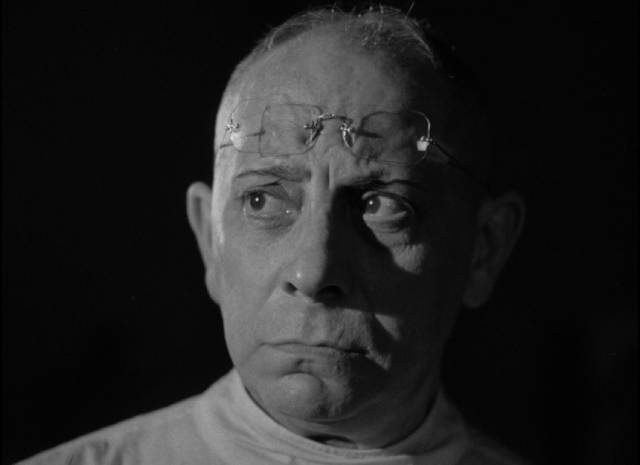
Republic Pictures Horror Collection (Various, 1944-46)
The four-movie Republic Pictures Horror Collection includes Lesley Selander’s The Catman of Paris (1946), previously available on Imprint’s stand-alone Blu-ray which used the same source transfer. The weakest movie in the set is Philip Ford’s Valley of the Zombies (1946) and I’m certainly not the first to note that it features neither a valley nor zombies. Rather, there’s a mad undertaker who, although officially dying during an operation after being admitted involuntarily to an asylum, lives on with the help of frequent blood transfusions. Now he’s out for revenge on those who put him away, the action moving from a medical lab to an old dark house, the latter already an exhausted trope by 1946. With minimal atmosphere and non-existent thrills, it leans more into attempts at comedy than horror.
Much better is John English’s The Phantom Speaks (1945), in which a doctor with theories about the afterlife and survival beyond death finds what he believes to be an ideal subject in killer Harvey Bogardus (Tom Powers), persuading him on the eve of his execution to do his best to come back and report on what it’s like on the other side. The lab of Dr. Paul Renwick (Stanley Ridges) is more like a medium’s seance parlour where he tries to summon Bogardus’ spirit. What he didn’t count on was the killer having a will so much stronger than his own; he doesn’t realize that each session results in a blackout during which Bogardus takes over the doctor’s body and pursues his plans for murderous revenge. Stanley Ridges was no stranger to this kind of personality hijacking as he had already co-starred in Arthur Lubin’s Black Friday (1940), in which a misguided Boris Karloff had replaced his brain with that of a homicidal gangster.
Best of all is George Sherman’s The Lady and the Monster (1944), the first adaptation of Curt Siodmak’s 1943 novel Donovan’s Brain. This obviously had a slightly better budget than most Republic movies, giving it a greater sense of scale with some effectively atmospheric cinematography from the great master of chiaroscuro John Alton. Although “romantic leads” Richard Arlen and Vera Hruba Ralston are not really up to the job, the big attraction here is Erich von Stroheim as Professor Franz Mueller, who gets to prove his theories about the ability of the brain to live on after death when a plane crash near his desert castle delivers the severely injured industrialist William H. Donovan to his lab. With the help of his assistant Patrick Cory (Arlen), he removes Donovan’s brain and keeps it alive in a vat. The sinister megalomaniac manages to exert telepathic control over Cory, who begins to carry out Donovan’s plans while his widow (Helen Vinson) and her lawyer/lover (Sidney Blackmer) come sniffing around because there are questions about the estate. Like later adaptations, the script takes only the central gimmick of the brain from Siodmak’s novel, while pretty much inventing everything else, but von Stroheim adds more stature to the story than Lew Ayres (in Felix E. Feist’s Donovan’s Brain [1953]) or Peter van Eyck (in Freddie Francis’s The Brain [1962]).
Given the four movies’ poverty row origins, the transfers, while uneven, are all quite watchable. Each film gets a commentary – strangely, in the case of Valley of the Zombies, two – and there’s an hour-long conversation between Tim Lucas and Stephen R. Bissette about The Lady and the Monster, the source novel, and subsequent adaptations.
*
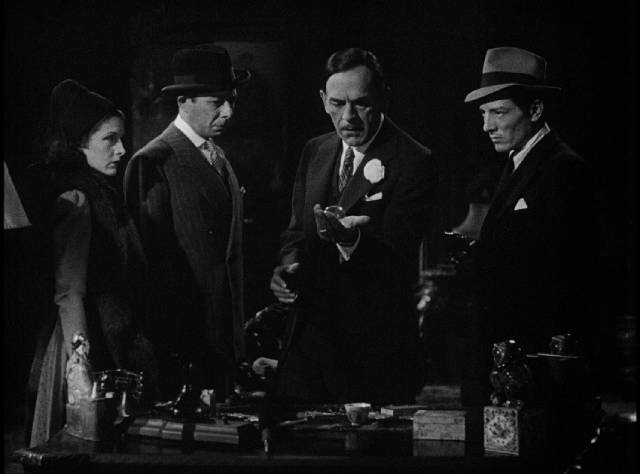
Mr. Wong Collection (William Nigh, 1938-40)
Silent film actor and occasional writer William Nigh had a long, busy career as a director – from 1914 to 1948 he made 121 rather undistinguished features – but would probably be completely forgotten today if his path hadn’t crossed with that of Boris Karloff in the late ’30s when the actor was grinding away on the fringes of Hollywood, starring in low-budget horrors occasionally spiced with a smaller role in a bigger film. While their brief association produced six features running between sixty and seventy minutes, there was no noticeable impact on either’s career trajectory – Karloff continued as before, accumulating credits and solidifying his status as one of the most reliable and beloved actors in genre cinema, while Nigh churned out more than two-dozen more movies before retiring – westerns, crime, comedies, adventures…
The main reason for watching the five Mr. Wong movies is Karloff, who brings a quiet sense of decency to his role as an advisor to the San Francisco police on crimes with some association to the city’s Chinese community. Although there’s obviously an issue with a white actor playing a Chinese character, Karloff manages to avoid the worst pitfalls of racial caricature – perhaps having learned something from his turn as the master of yellow peril menace in Charles Brabin’s The Mask of Fu Manchu (1932). If anything, he underplays Wong too much, giving us a rather passive character who walks through these minor mysteries with a zen-like detachment and no attempt to disguise his familiar English accent.
As is typical of this kind of mystery, the police are played rather dumb and helpless in order to emphasize the amateur’s preternatural deductive skills, while the brief running times don’t leave much room for narrative complications. Nigh doesn’t display much style or nuance, though the cinematography is occasionally atmospheric. Most of the acting is strictly formulaic, with Grant Withers’ Captain Street permanently perplexed and deferring to Wong at the very first appearance of a dead body. The third movie introduces Marjorie Reynolds as Street’s girlfriend, brash reporter Bobbie Logan, who adds an echo of ’30s screwball to the proceedings, which may liven things up a bit but also undermines any attempt to create an atmosphere of mystery and suspense.
This may sound like a pretty negative critique, but within their generic and budgetary limitations, thanks to the presence of Karloff, who is never less than charmingly watchable, these five movies are an enjoyable way to pass a few hours. Ironically, after Karloff and Nigh moved on there was a sixth Mr. Wong made in which the character was finally played by an actual Chinese actor – a landmark, given all the Chinese detectives of the period played by Warner Oland, Sidney Toler, Peter Lorre and Karloff. Keye Luke only appeared in this one, final Wong movie (Phantom of Chinatown, dir. Phil Rosen, 1940), though he had regularly appeared as Chan’s Number One Son in the Oland movies. It’s a pity Kino didn’t include Rosen’s movie as an extra in their set, because while it may be no better than Nigh’s series it has obvious historical significance.
The transfers are all quite good, given their age and low-budget origins, but the only extra is a commentary on the first movie, Mr. Wong, Detective (1938)
Comments